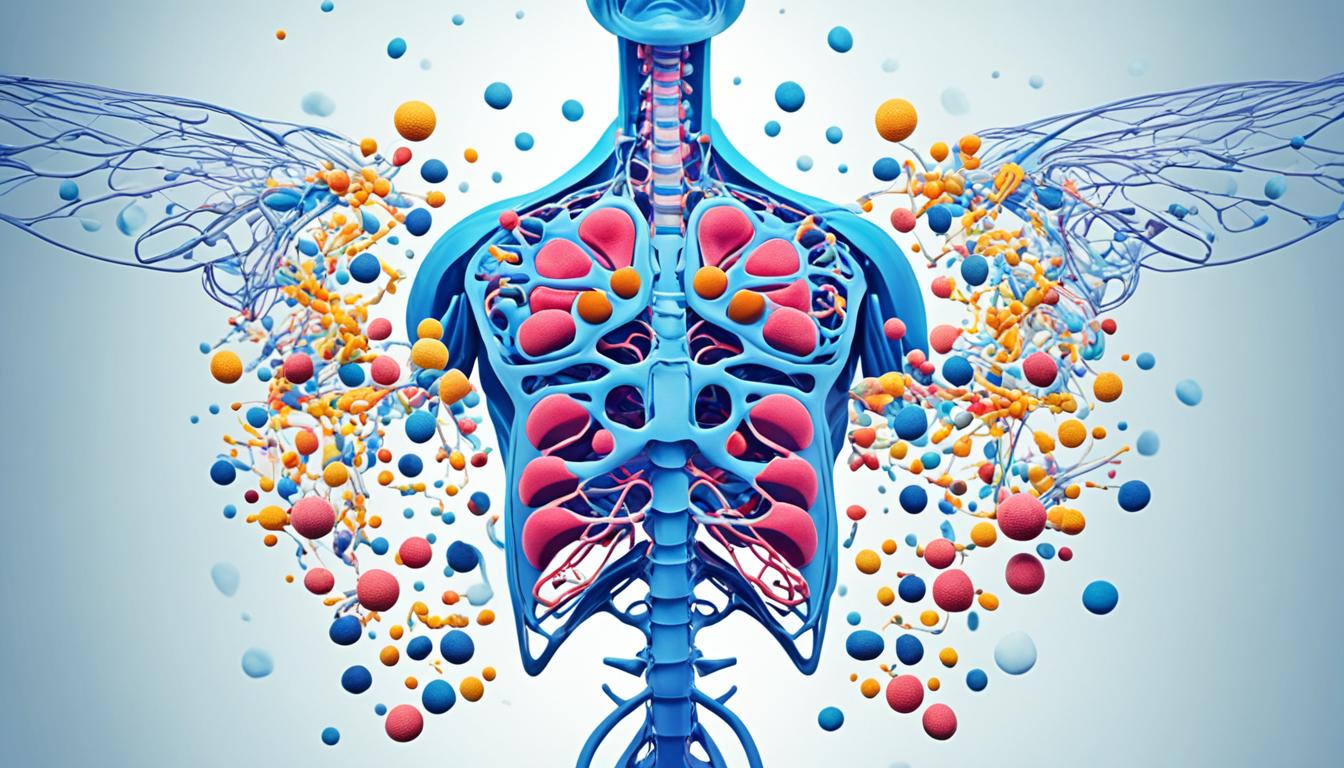Graves’ disease is when the body mistakenly attacks the thyroid gland. This causes it to make too many thyroid hormones, leading to a condition called hyperthyroidism. It affects about 1 in every 200 people in the U.S. This disease happens mostly in women between 30 and 50.
People with Graves’ disease may notice they are very sensitive to heat or lose weight without trying. They might feel nervous, have shaky hands, and find it hard to sleep. A fast or irregular heartbeat is also common. Sometimes, the disease can affect the eyes, making them red, swollen, and bulging.
The exact reasons for Graves’ disease are not clear. It seems to be part genetic and part from the environment. Doctors usually diagnose it with blood tests checking thyroid hormones and thyroid-stimulating immunoglobulin.
There are a few ways to treat Graves’ disease. Options include medicines to lower thyroid hormone levels, radioiodine therapy, and beta-blockers. Surgery is another choice, especially for severe cases. It’s done to remove part or all of the thyroid gland. This helps reduce symptoms and the amount of thyroid hormones.
Currently, some researchers are looking into using stem cell therapy to treat Graves’ disease. They want to see if this new method works well and is safe for patients.
Key Takeaways:
- Graves’ disease is an autoimmune condition that causes the overproduction of thyroid hormones, resulting in hyperthyroidism.
- Common symptoms include heat intolerance, weight loss, nervousness, hand tremors, and rapid heartbeat.
- Thyroid eye disease, characterized by inflammation and bulging of the eyes, can also occur.
- Diagnosis is typically made through blood tests.
- Treatment options include medication, radioiodine therapy, beta-blockers, and surgery.
Treatment Options for Graves’ Disease
The goal in treating Graves’ disease is to bring down the high levels of thyroid hormones. This helps ease its symptoms. Patients have various treatment paths to choose from, based on the disease’s seriousness and their own unique needs.
- Anti-thyroid medication: A popular choice is anti-thyroid drugs like methimazole. They cut down on thyroid hormone production. This brings hormone levels back to normal.
- Radioiodine therapy: Radioiodine therapy is also common. It uses radioactive iodine to target and destroy the thyroid cells making too much hormone. As a result, the thyroid might become underactive, but it’s simpler to control this way.
- Beta-blockers: Doctors might prescribe beta-blockers for short-term relief. These drugs help control a rapid heart, shaking, and worry. They work by managing the heart’s pace, easing certain symptoms.
- Surgery: Surgery could sometimes be the best route, especially for pregnant women or those with big goiters. A thyroidectomy removes part or all of the thyroid gland. It’s a strong option for people who don’t see improvements with other treatments.
- Stem cell therapy: Research into using stem cells for treating Graves’ disease is ongoing. This method aims to repair the thyroid’s normal functions and its hormone regulation. Though still in testing, it holds a promise for the future.
If you have Graves’ disease, it’s vital to team up with your doctors. They will create a treatment plan that suits you best. Your overall health, symptom severity, and other medical conditions all play a part in deciding on the best steps.
Table: Comparison of Treatment Options for Graves’ Disease
| Treatment Option | How it Works | Pros | Cons |
|---|---|---|---|
| Anti-thyroid medication | Reduces hormone production | – Non-invasive – Can be used long-term |
– Side effects – May require ongoing medication |
| Radioiodine therapy | Destroys thyroid cells | – Single treatment – Can lead to an underactive thyroid |
– Requires isolation – Potential side effects |
| Beta-blockers | Provides temporary symptom relief | – Rapid relief from symptoms – Can be used as needed |
– Does not treat the underlying condition – May have side effects |
| Surgery | Removes part or all of the thyroid gland | – Provides permanent treatment – Can be effective for severe cases |
– Requires anesthesia and surgery – Potential complications |
| Stem cell therapy | Uses stem cells to restore thyroid function | – Potential regenerative treatment – Future treatment option |
– Still in experimental stages – Limited research |
Conclusion
Graves’ disease is a common autoimmune problem. It causes hyperthyroidism and mostly affects women between 30 and 50. People with Graves’ disease may feel hot often, lose weight, be nervous, and have an irregular heartbeat. Luckily, there are many ways to treat this condition and make life better for those it affects.
The main treatments for Graves’ disease are anti-thyroid drugs, radioiodine therapy, beta-blockers, and sometimes surgery. These treatments help to control the thyroid hormone levels and ease symptoms. For example, anti-thyroid drugs like methimazole can help to balance hormone levels. Radioiodine therapy zaps the thyroid cells creating too many hormones. Beta-blockers are used to calm symptoms like a fast heartbeat. In some cases, surgery might be needed to take out part or all of the thyroid gland.
Stem cell therapy is being looked into as an exciting new way to treat Graves’ disease. This area of research has the potential to help those who don’t do well with usual treatments or might relapse. However, more study is needed to find out how well and how safe stem cell therapy is in the long run for this disease.
Getting diagnosed early and treated correctly is key to dealing with Graves’ disease. If you think you have symptoms of hyperthyroidism or Graves’ disease, it’s crucial to see a doctor. They can give you the right diagnosis and suggest personalized treatments. With the right care, people with Graves’ disease can live healthy, full lives.

